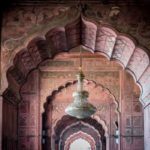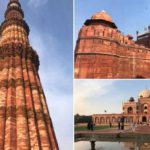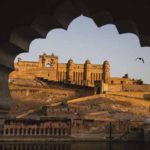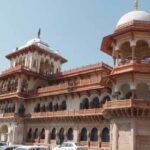Top 10 UNESCO World Heritage Sites India Once, a wise scholar said India was a continent masquerading as a country. The words ring true as the country has the most diverse and special collection of various natural and cultural wonders. No wonder India has many UNESCO World Heritage sites as one of the best countries to have.
On this term-UNESCO World Heritage site, we keep harping. But what does this mean exactly?
Well, a ‘World Heritage Site’ is a landmark or area that is deemed to have cultural, historical, or science importance by the United Nations Educational, Scientific and Cultural Organization (UNESCO) and is under the legal jurisdiction of international treaties. The common interests of mankind are the most significant element in selecting a world heritage site.
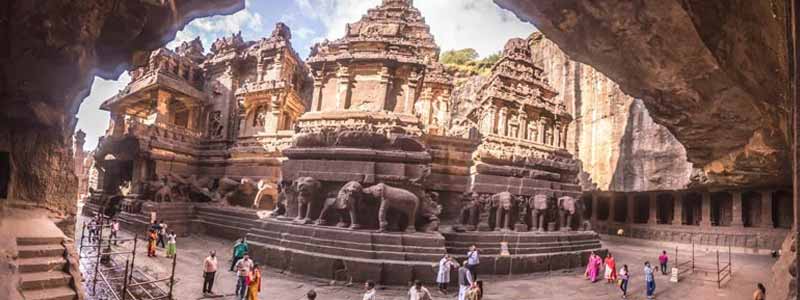
Ajanta and Ellora Caves – Maharashtra
The Caves of Ajanta Ellora are a UNESCO World Heritage site in the state of Maharashta. There are approximately 30 rock-cut Buddhist cave monuments dating from the 2nd century B.C. Towards 480 C.E. The caves of Ajanta and Ellora have been known as the masterpieces of temples of the Buddhist, Hindu and Jain faiths. Starting from the 2nd century B.C., the former were constructed in 2 stages 1.Starting from 400-650 C.E. and 2nd level, while the Ellora Caves are more spread out and 34 in number and dates to the time between the 6th and 11th centuries AD. These caves are one of the most attractive tourist centres in Maharashtra state of Indian mythology.
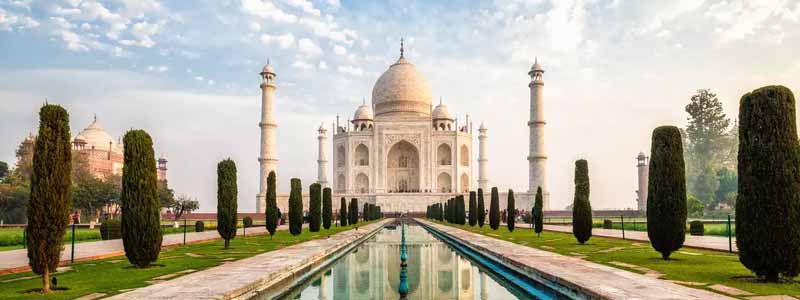
Taj Mahal – Agra
For its incredible elegance and architectural significance, the Taj Mahal has long been recognised. Taj Mahal, completed in 1653 and commissioned as a tomb for one of his favourite wives by the Mughal emperor, was declared a UNESCO World Heritage Site in 1982. It attracts millions of visitors per year as a national icon of India. The annual influx of tourists imperils the physical fabric of the monument, as with similarly prominent, iconic, and fragile sites. Currently, tourists are confined to the neo-colonial version of the Mughal Garden dominating the foreground of the ubiquitous imagery of the Taj to see the mausoleum. It is, however, the Yamuna River’s broader cultural landscape and its flood plain, rural hamlets and farm fields, the streets and open spaces adjacent to the riverfront that offer the best view of the monument.
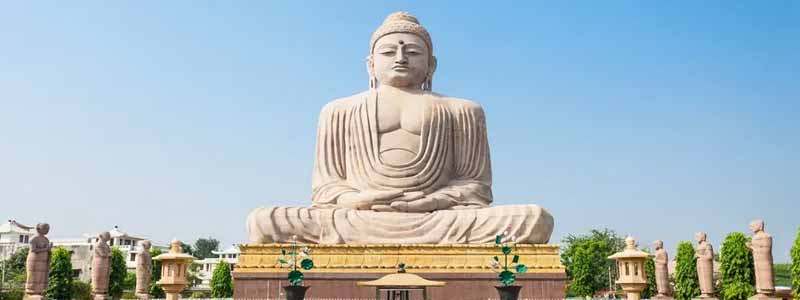
Bodh Gaya – Bihar
Buddhism, founded by Lord Gautama Buddha, is one of the oldest religions practised in India. Bodh Gaya’s Mahabodhi temple complex deserves special mention as it is believed that Bodh Gaya is the place where Lord Gautama Buddha achieved enlightenment and began to preach his ideals. As an elegant building, highly venerated by the Buddhists, the Bahabodhi temple complex is more than a thousand years old. The seven-storey temple and other buildings inside the temple complex are listed by UNESCO as a World Heritage Site.
On the west side of that temple, under which Lord Gautama Buddha had his revelations, is the most renowned Bodhi tree. It is assumed that the present tree is the direct descendant of the old one, another place of respect for Buddhists and others.
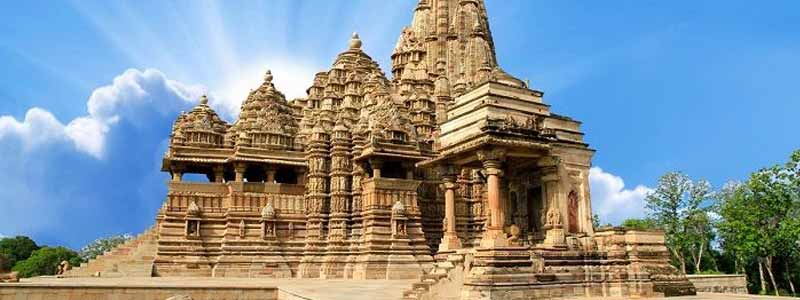
Khajuraho Temple Complex – Madhya Pradesh
Khajuraho‘s temples are world renowned for their architectural art and have been declared a UNESCO World Heritage Site. The Temples of Visvanatha, Parsvanatha and Vaidyanatha belong to the time of King Dhanga, Yasovarman ‘s successor. Among the western group of royal temples of Khajuraho, the Jagadambi, Chitragupta, are worthy of mention. The everlasting Kandariya Mahadeva, which is credited to king Ganda (A.D. 1017-29), is the largest and greatest temple of Khajuraho. The other examples that followed are smaller, yet elaborately built, namely Vamana, Adinatha, Javari, Chaturbhuj and Duladeo. For lofty terraces (jagati) and functionally successful plans, the Khajuraho group of temples is noted. In addition to the cult images, the sculptural embellishments include parivara, parsva, avarana devatas, dikpalas, apsarases and sura-sundaris, earning universal admiration for their delicate, youthful female forms of ravishing beauty. The winsome grace and elegance are welcomed by the attire and ornamentation.
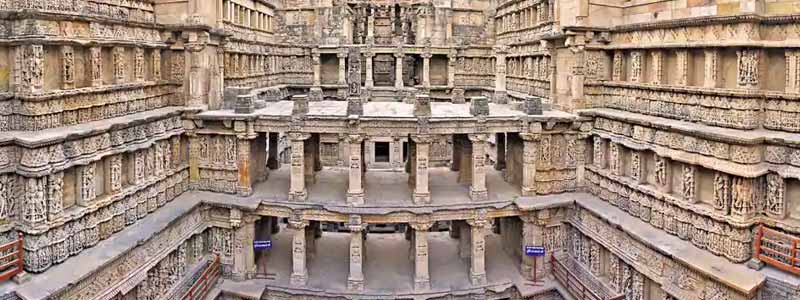
Rani Ki Vav – Gujarat
In India, UNESCO has recognised Rani ki Vav as a World Heritage Site. This 11th century building, located in the Patan district of Gujarat, was included in the World Heritage List at the recent UNESCO meeting held in Doha on Sunday. Last year, ASI nominated this ancient structure that epitomises the excellence of Indian architecture in February. It is also to be noted that India had two nominations this year: Rani ki Vav and Great Himalayan National Park in Himachal Pradesh vying for the coveted recognition.
Indian architecture that combines in itself a wide variety of architecture styles that clearly reflects innovation has so much to offer. Rani ki Vav has a fascinating tale to tell, being a superlative example of the ancient style of architecture that has evidently succeeded in gaining global recognition. Promoted primarily as part of Gujarat’s Heritage Tourism, Rani Ki Vav has quickly developed itself in Gujarat as a major tourist attraction.
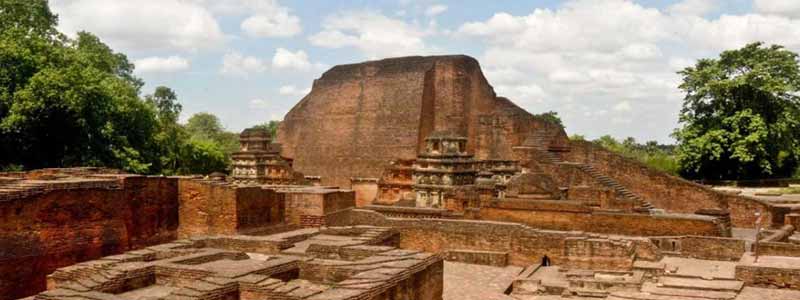
Nalanda University
Recently declared as a World Heritage Site by UNESCO, the ruins of ancient Nalanda Mahavihara (also known as old Nalanda University) are the second World Heritage Site (the first is Mahabodhi Temple) situated in the state of Bihar in north-eastern India.
In the Gupta dynasty, in the 5th century CE, Nalanda Mahavihara was established. It is the Indian Subcontinent’s most ancient monastic-cum-scholastic establishment. As one of the oldest universities in the world, it has received over 800 years of patronage from various local kings and foreign rulers. It attracted scholars and students from near and far during its peak time, some of whom travelled all the way from China, Korea, and Central Asia. But it was completely destroyed three times by invaders in history, according to the documents. It was last abandoned and forgotten in 1193 by the Turkish army until it was excavated and consolidated in the 19th century.
The total area of the excavation is approximately 14 hectares, including stupas, shrines, residential and educational buildings, and significant works of art as well. All the buildings there were made of red bricks. With its rooms constructed around the central courtyard, there is a very fascinating two-floor educational building where steps lead up to a dais for the professors to address the students. There is a small chapel with a half-broken statue of Lord Buddha as well. On the top of Temple no. 3, surrounded by smaller stupas studded with statues of the Lord Buddha, people can get a magnificent view of the entire city.
Jantar Mantar – Jaipur
Located in Jaipur, Jantar Mantar is a UNESCO World Heritage Site and one of the world’s largest observatories. At the time of its creation and the methods used in it, the monument was well ahead of its time. Covering a region of nearly 18,700 sq. Km, the Jantar Mantar brings together the elements of science , art, and faith. It stands as a sign of Jaipur’s princely period and the Pink City’s royal heritage. Both lovers of astronomy and those drawn by its importance and history are attracted by the special structure of the monument.
“In 1734, Maharaja Sawai Jai Singh II founded Jantar Mantar, with the name itself derived from Sanskrit words meaning” Yantra “and” Mantra. Yantra means tools, while Mantra means formula. The word Yantra has been substituted for Jantar. There are different kinds of astrological and architectural instruments within the monument that arouse the passions of astronomers and historians around the world.
Hampi Monument Complex – Karnataka
Spread along the group of monuments at Hampi are the ancient ruins of the powerful Vijaynagar Empire. It is an ancient village situated along the banks of the Tungabhadra River in northern Karnataka. This village is the country’s most famous UNESCO World Heritage Site. It is one of the locations that draw the greatest visitors from all over the world, believed to have been the capital of the Vijayanagara Empire. If you’re wheeling around Bangalore, visiting this place is simply impossible to miss. It is said this village existed in the 1st century AD. These ruins of the Vijayanagara Empire are spread over an area of 26 sq. km surrounding Hampi. Because of the historic Virupaksha Temple, it is the central religious centre of the Vijayanagara Empire.
Some places that top the popularity chart have been marked by tourist guides, and they are — the Hampi Bazar and the neighbouring town, the Royal centre around Kamalapur, and the Hemakuta Hill, of course. Visit the south of the main Hampi Temple when you’re done exploring this ancient ruin, inspecting every stall in the market and even bowing your head to the great deities of the ancient Temple. It includes some of the oldest relics, Jain temples and Lord Narasimha ‘s extremely captivating monolithic sculpture. You can drive about 2 km east from the market place and visit the renowned Vittala Temple.
Buddhist Monuments at Sanchi, Madhya Pradesh
In Madhya Pradesh, a UNESCO World Heritage Site, the Sanchi Stupa is the best-preserved Buddhist monument in India. This Buddhist complex, situated on a small hilltop in the town of Sanchi in Madhya Pradesh, includes Buddhist stupas, temples and monasteries. The most famous monument that was built in the 3rd century BCE is the Great Stupa. The earliest Stupa was just a plain dome of brick constructed over Buddha’s relics. This is now a significant monument of Indian Architecture and World Heritage, with a history of many centuries of building, reconstruction, abandonment and restoration.
Red Fort – Delhi
One of the oldest and most majestic monuments, the Red Fort, a UNESCO World Heritage Site in India, draws thousands of tourists each year. Established during the reign of Mughal Emperor Shah Jehan, it formed the heart of Old Delhi’s walled town. Bahadur Shah II “Zafar” was the last Mughal emperor to occupy the fort. During the 1857 rebellion against the British, the Red Fort was not defended, despite being the seat of Mughal power and its defensive capabilities.
Delhi’s Red Fort is a huge tourist attraction and a must-do for trips to India. During the 17th century, the 5th Mughal Emperor Shah Jahan founded the mighty citadel of the Red Fort and laid the foundation for the seventh city of Delhi, Shahjahanbad. The Red Fort, also known as Qila-e-Mubarak, was the capital moved from Agra to Delhi by Shah Jehan. It was the residence of members of the royal family and is a major cultural and historical site in and around Delhi.


